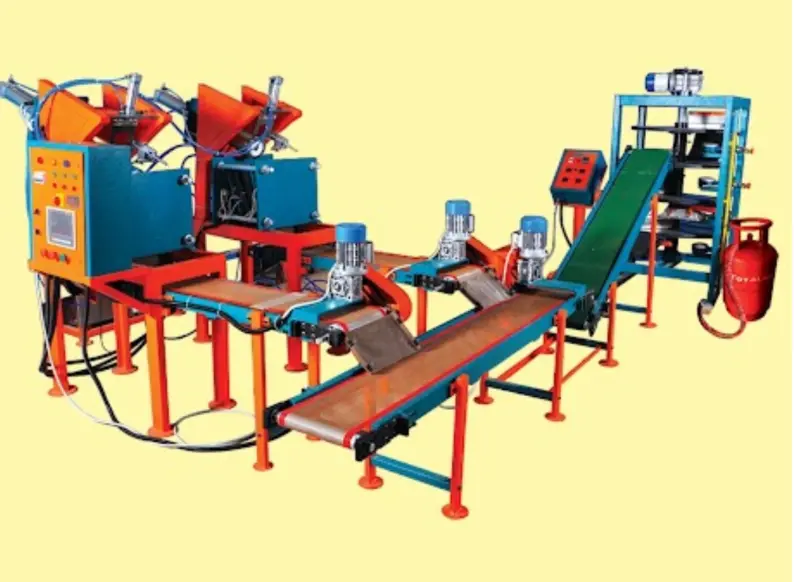
Benefits of Using Chapati Making Machines in Commercial Kitchen
In the dynamic food industry, efficiency, speed, and consistency are vital aspects determining the success of a commercial kitchen. As technology advances, innovative solutions replace traditional methods of food preparation with speedy techniques, improving end-product quality. The chapati manufacturing machine is one of the innovations that has gained recognition in recent years. This automated machine has altered the cooking method of chapatis in commercial kitchens. In this blog, we will look at the advantages and benefits that chapati-making machines provide.
Improved Efficiency And Speed
Time is an important factor in a busy commercial kitchen. Traditional chapati preparation is a time-consuming process that involves a lot of skilled labor to knead the dough, roll it into regular rounds, and cook it on a griddle or tava. Chapati machines automate the entire process, producing round chapatis in a fraction of the time it would take a trained chef. This increased efficiency translates to increased output and faster service, which is especially important during peak hours.
Consistency in Quality
Consistency determines professionalism. Maintaining the same quality in each chapati is difficult when relying only on human labor. Differences in dough thickness, cooking time, and temperature can result in unevenly cooked chapatis. Chapati-making machines, on the other hand, assure consistency in size, texture, and flavor, boosting the eating experience for clients and establishing a reputation for culinary quality.
Optimization of Labor And Skill
Hiring and training skilled chapati makers is laborious and costly. Chapati machines decrease the need for trained chefs to perform this activity. It reduces labor costs and allows experienced personnel to focus on more complex areas of food preparation, resulting in a more diverse and specialized workforce.
Food Hygiene And Safety
In every food facility, maintaining perfect hygiene standards is mandatory. Traditional chapati preparation involves a personal touch between the chef's hands and the dough. While cooks adhere to strict cleanliness protocols, there is always room for error. Chapati manufacturing machines cut the risk of contamination, guaranteeing that the cooked food is safe and free of any external pollutants.
Personalization And Adaptability
Modern chapati machines have the capacity to accommodate various dough types and recipes. They can make chapatis in different sizes and thicknesses, responding to a broad range of consumer preferences. These machines replicate the skilled work of a chef, ensuring that each chapati is well cooked, soft on the inside, and delightfully crispy on the exterior. The controlled cooking procedure in these machines eliminates overcooking or undercooking, resulting in tasty and fulfilling chapatis every time. This adaptability enables commercial kitchens to adapt to changing trends and test new recipes with substantial redesigning or training.
Efficiency in Resources And Energy
Chapati-making machines help to maximize resource utilization. They use less water to make each chapati, minimizing waste. Furthermore, these machines are energy-efficient, utilizing less electricity than traditional cooking methods. It corresponds with environmental objectives and adds to long-term cost savings.
Reduced Physical Stress
The physical difficulties of spreading out several chapatis can be stressful for cooks' well-being and health. Chapati machines relieve this stress by automating the labor-intensive part of the process. Chefs can focus on controlling the equipment, ensuring quality control, and engaging in other innovative culinary efforts.
Increased Scalability And Output
The demand for food production rises when a commercial kitchen expands its operations. Chapati-making machines provide seamless expansion as they can regularly produce an enormous volume of chapatis without compromising quality or taste. The result is an excellent investment for businesses striving to expand.
Reduced Training Time
It takes time to teach new employees the nuances of traditional chapati making. In contrast, operating a chapati-making machine takes less training because of automation and standardized processes. It speeds up the onboarding process for new personnel, resulting in faster incorporation into the kitchen's operations.
Unlock the Benefits of Using Chapati Making Machines in Commercial Kitchen with JJ Hi-tech, Coimbatore
Culinary innovation extends beyond new recipes and unique ingredients. It also includes modern technology to simplify processes, enhance productivity, and improve food preparation quality. Chapati-making machines are the best example of this invention, providing many benefits to commercial kitchens. These machines create an opportunity for modern culinary enterprises, helping their success and expansion in a competitive industry. Embracing this technology saves time and resources and paves the road for culinary excellence that makes a lasting impression on every diner.
JJ Hitech Automation and Machineries developed chapati machines with innovative technology to make chapati production more efficient, consistent, and high-quality. Commercial kitchens can adapt to changing culinary trends and experiment with new recipes with the help of JJ Hitech Automation and Machineries' revolutionary technology. Establishments can get scalability, greater productivity, and reduced training time by implementing their cutting-edge chapati machines, thus enhancing operational efficiency and customer pleasure.
